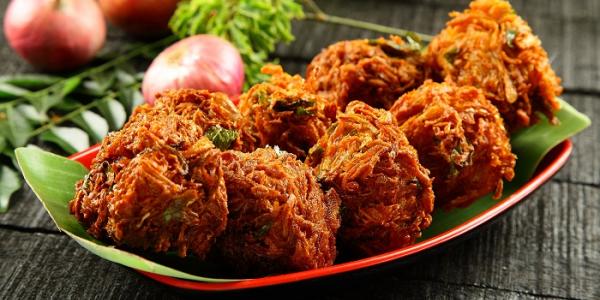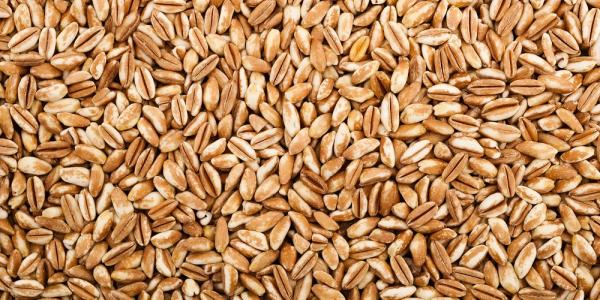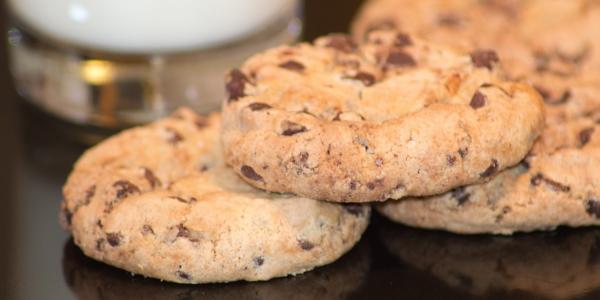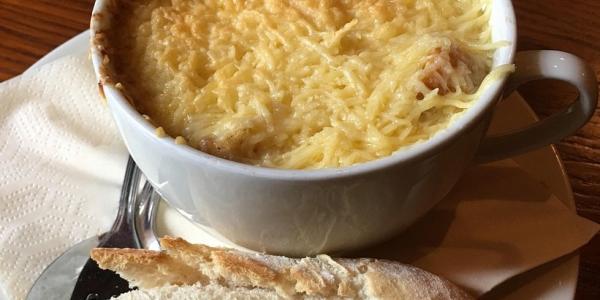Kohlrabi Pakora

Ingredients
- 3 c. (about 2 medium) shredded kohlrabi
- 1 jalapeno (deveined and seeded), minced
- 2 cloves of garlic, minced
- 2 T. minced fresh ginger
- ½ c. julienned red onion
- ¼ c. shredded carrot
- ¾ c. chickpea flour
- 2 t. curry powder
- 2 t. garam masala
- 1 t. ground cumin
- ½ t. cayenne pepper
- 1 T. kosher salt plus small amount for sprinkling
- 1 egg
- Oil for deep frying
- ¼ c. chopped cilantro
- ½ lemon cut into wedges
Preparation
Put your prepared vegetables in large bowl. In a separate bowl, whisk the chickpea flour, spices, and salt until combined. Add flour mixture and egg to vegetables. Mix well. If the mix looks dry, add a little water to make sure the flour sticks to the vegetables.
Heat oil in fryer or skillet until oil temperature reaches 350°F.
Using a tablespoon, get a heaping spoonful of mix into fryer. Fry scoops in the oil for about 6 minutes, or until a nice golden brown. Work in small batches so your oil does not cool off.
Remove pakoras from oil and place them on paper towel. Garnish with a little more kosher salt and cilantro. Serve lemon wedges as a garnish
Learn More About Kohlrabi
Kohlrabies are the oddballs of the cabbage family. Not odd for their color—they come in pale green and purple. Not odd for their shape—they’re round. So what makes them odd? Their globe-shape, reminiscent of root vegetables (think turnips) and tubers (think potatoes), are actually plump stems that grow just above the ground. The leaves are edible too but often missing as they are trimmed away before they reach the produce aisle.
Kohlrabi, the German name for this vegetable, sounds exotic but it simply means “cabbage turnip”. Its name in northern India, monj-hakh, gives credit to this plant for its two edible parts: monj meaning round and hakh meaning leafy.
When shopping for kohlrabies, choose the ones that are firm to the touch and no bigger than 3 inches in diameter. These are the young, tender ones. Larger kohlrabies are often woody. If you find small ones with the leaves attached—bonus! Store the leaves separate from the stems. Wrapped in damp paper towel then placed in a plastic bag, the leaves will keep in the fridge for 3 to 4 days. Place the globe-shaped parts in a separate plastic bag in the fridge. They will keep for several weeks but are best when used within a week.
Kohlrabi’s flavor is similar to broccoli stems only sweeter. Young kohlrabies are delightfully crisp and crunchy, often as juicy as an apple, and tender enough to eat raw. If they’re young and tender, there’s no need to peel them. Kohlrabies shred perfectly for slaw. Dice small or cut into matchsticks for vegetable salads. To cook, use delicate methods such as steaming or braising and keep cooking time brief.
Prepare kohlrabi leaves any way you would prepare dark leafy greens such as kale or spinach. A simple method is to chiffonade the leaves and then sauté lightly in olive oil with garlic and red pepper flakes.
Peggy Crum MA, RDFeatured Recipes

Rhubarb & Strawberry Crisp
Combine tart rhubarb with sweet strawberries, add a streusel topping, and bake until bubbly. Dessert doesn’t get easier—or more classic—than this. Serve warm with a scoop of vanilla ice cream. You’re sure to get rave reviews!

Farro Salad with Grilled Vegetables
Chewy farro grains are delicious in this autumn-y salad. Recipe yields enough for dinner for 2 to 4 with some left for a couple of lunches. To do this, make the base with dressing, farro, and grilled veggies. Add fresh veggies to the base as you go.

Pecan and Dark Chocolate Chip Cookies
Roasting amps up the flavor in everything including pecans. Chef Kurt's attention to detail takes a traditional chocolate chip cookie to another level of yum!

Onion Soup
Onions, the simplest of pantry staples, mingle with butter, broth, and herbs to become luxuriously smooth and delicious. Add "homemade" croutons and a blend of cheeses to make a complete and satisfying meal.





